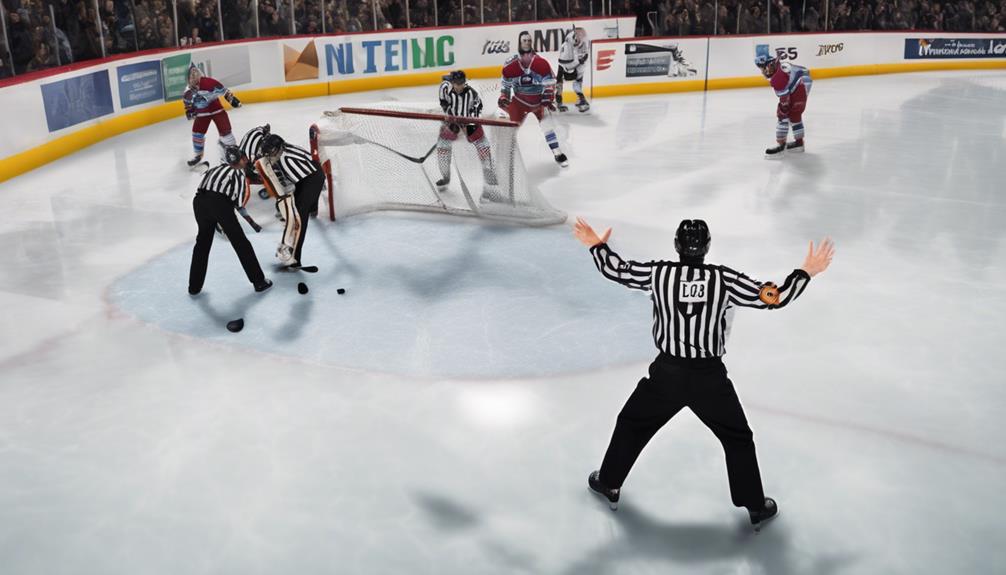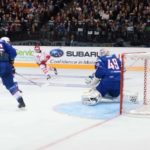In the fast-paced world of NHL games, timeouts hold a strategic importance for teams looking to regroup, strategize, or simply catch their breath amidst the intense gameplay.
Understanding the intricacies of when and how timeouts can be called can significantly impact the flow and outcome of a match. As teams navigate the limited opportunities to pause the game, the question arises: how many timeouts do NHL teams actually have at their disposal, and how do they strategically employ this precious resource to their advantage?
Let's explore the rules and implications further.
NHL Timeout Rules Overview
In the fast-paced world of NHL games, teams are allotted a strategic tool known as a timeout, which holds significance in the flow and dynamics of the game. Timeout rules explanation in the NHL stipulates that each team is allowed one 30-second timeout per game.
These timeouts serve as crucial moments for teams to regroup, strategize, or simply provide players with a breather during intense gameplay. Understanding the team timeout limits is vital for coaches to maximize their impact on the game.
With only one timeout available, coaches must carefully choose when to utilize it for the most significant advantage. These strategic decisions can often influence the outcome of close matches, making timeouts a valuable asset in the NHL game plan.
Number of Timeouts Per Team
Teams participating in NHL games are granted a single 30-second timeout opportunity per game to strategically regroup and plan their course of action. This timeout can be a crucial moment for teams to gain a strategic advantage and fine-tune their game management. Consider the following insights:
- Teams often use timeouts to give players a breather during intense moments.
- Coaches use timeouts to discuss tactics and adjust strategies based on the game situation.
- Timeout utilization can impact the outcome of close matches significantly.
- Properly timed timeouts can shift momentum and provide teams with a competitive edge.
Understanding when and how to effectively use this timeout can be a game-changer in the fast-paced world of NHL hockey.
Timing of Timeout Requests
Strategically timing timeout requests in NHL games can significantly impact a team's performance and overall game strategy. Timeout management is a critical aspect that coaches must consider to maximize their team's potential.
Knowing when to call a timeout can provide players with a much-needed breather during crucial moments, allowing them to regroup and refocus. Additionally, the duration of the timeout plays a vital role in giving the team enough time to discuss tactics, rest key players, or disrupt the opposing team's momentum.
Coaches often use timeouts strategically to make game-changing decisions, adjust strategies, or motivate their players. Therefore, mastering the art of timeout management and understanding the importance of timing and duration can be the difference between victory and defeat in NHL games.
TV and Commercial Breaks Impact
During NHL games, the impact of TV and commercial breaks on team momentum and player performance cannot be understated. These breaks play a significant role in shaping the flow of the game and can affect the outcome in various ways.
- Disruption of Momentum: Commercial breaks can disrupt a team's momentum, especially after a strong offensive or defensive sequence.
- Rest vs. Rust: Players must balance the benefits of rest during breaks with the risk of losing their competitive edge.
- Strategic Timeouts: Coaches strategically use TV timeouts to adjust game plans, leading to crucial moments in the match.
- Impact of Advertising: Advertising during breaks influences viewer engagement and the overall fan experience, shaping the game's commercial side.
Understanding the nuances of TV and commercial breaks is essential in comprehending the full scope of NHL game dynamics.
Overtime and Playoff Timeout Rules
Amid the intensity of NHL playoff games, the rules governing timeouts during overtime play a pivotal role in determining team strategies and outcomes.
Overtime strategy becomes crucial as teams navigate the heightened pressure of extended gameplay. Coaches must make split-second decisions on when to utilize their timeouts strategically.
In the heat of playoff intensity, every second counts, and a well-timed timeout can provide players with much-needed rest, allow for crucial adjustments, or break the opponent's momentum.
Understanding the dynamics of when to call a timeout can be a game-changer in overtime scenarios where fatigue and mental sharpness play significant roles.
Teams that effectively manage their timeouts during overtime can gain a competitive edge in the quest for victory.
Strategic Use of Timeouts
The judicious utilization of timeouts in NHL games can significantly impact team performance and outcomes by providing opportunities for strategic recalibration and player rejuvenation. When considering strategic use of timeouts, teams should focus on the following key aspects:
- Timeout effectiveness: Analyzing data on how teams perform after taking a timeout can help coaches make informed decisions on when to call for a break in play.
- Timeout communication strategies: Developing clear and concise communication strategies during timeouts can ensure that players understand the adjustments needed to improve performance.
- Strategic timing: Timing timeouts to disrupt an opponent's momentum or provide rest during crucial moments can be a game-changer.
- Player feedback: Encouraging player input during timeouts can lead to collaborative problem-solving and better decision-making on the ice.
Frequently Asked Questions
Can NHL Teams Call Timeouts During Shootouts?
Amidst the shootout pressure in NHL games, teams cannot call timeouts. This strategic decision tests players' abilities to perform under immense stress. Understanding timeout strategy in hockey is crucial for coaches navigating critical moments.
Are There Any Restrictions on When a Team Can Call a Timeout During a Game?
Timeout strategy and time management are crucial in NHL games. Coaches make strategic decisions on when to call timeouts, impacting game flow. Proper utilization can provide teams with crucial rest, tactical adjustments, and momentum shifts.
How Do Referees Determine When a Team Has Used Their Timeout?
Referees meticulously track timeouts, crucial in the chess game of hockey. Through keen observation and communication with the timekeeper, officials ensure fair play by enforcing timeout limits, enhancing strategic gameplay and maintaining game flow.
Can Coaches Challenge a Timeout Call Made by the Referees?
Coaches cannot challenge a timeout call made by referees in NHL games. These decisions are solely at the referees' discretion to maintain fairness. Understanding the strategic importance of timeouts in game dynamics is crucial for coaches to optimize their team's performance.
Are There Any Specific Scenarios Where a Team Automatically Receives a Timeout?
Timeout rules in NHL games allow for strategic pauses in play. Teams can call a timeout during stoppages or after an icing violation. Coaches use timeouts for rest, strategy adjustments, or to rally players.









